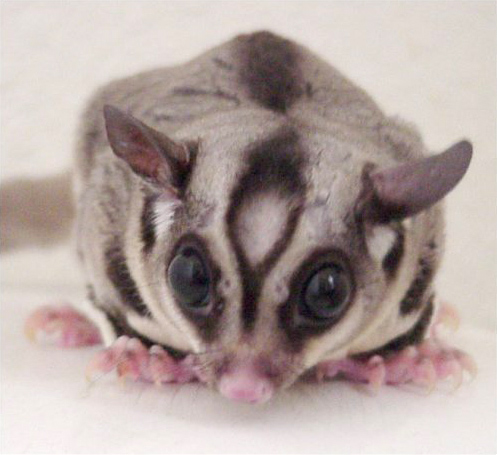|
Nathan, Queensland
Nathan is a southern Suburbs and localities (Australia), suburb in the City of Brisbane, Queensland, Australia. In the , Nathan had a population of 1,085 people. Geography Nathan is home to Toohey Forest Conservation Park, Griffith University's Nathan campus and the Queensland Sport and Athletics Centre which hosted the opening ceremony of the 1982 Commonwealth Games. The Queensland Academy of Sport currently uses the facilities located at the stadium. The Mount Gravatt Cemetery is part of Nathan. Nathan remains sparsely populated, with much of the park and university campus being filled with eucalypt forest, grass trees, banksia and leptospermum. Local fauna include tawny frogmouths, powerful owl, hoary wattled bats, sugar gliders, greater gliders, squirrel gliders, Megabat, flying foxes and Phalangeriformes, possums. Surrounding suburbs include MacGregor, Queensland, MacGregor, Robertson, Queensland, Robertson, Salisbury, Queensland, Salisbury, Coopers Plains, Queensland, C ... [...More Info...] [...Related Items...] OR: [Wikipedia] [Google] [Baidu] |
Queensland Sport And Athletics Centre
The Queensland Sport and Athletics Centre (QSAC , formerly known as the Queen Elizabeth II Jubilee Sports Centre) is a Multi-purpose stadium, multi-purpose sports facility in Nathan, Queensland, located south-east of the Brisbane central business district, Brisbane CBD. Its main stadium – formerly known as QEII Stadium, and later ANZ Stadium under a naming rights agreement with ANZ (bank), ANZ – accommodates 48,500 spectators, while its smaller State Athletics Facility accommodates 2,100 spectators. Both stadiums feature Rekortan running tracks and Grass, natural grass fields. The Queensland Academy of Sport, Queensland State Netball Centre, and a complex of beach volleyball courts are also housed at the facility. QSAC is owned by the Queensland Government, and its main stadium and State Athletics Facility are operated through its agency, Stadiums Queensland. As a track and field venue, the main stadium hosted competitions at the Athletics at the 1982 Commonwealth Games, 19 ... [...More Info...] [...Related Items...] OR: [Wikipedia] [Google] [Baidu] |
Toohey Forest Conservation Park
Toohey Mountain is a mountain at the eastern side of the City of Brisbane's suburb of Moorooka. The rise was named after James Toohey, an Irish born Sydneysider who made his wealth in the California gold rush, before settling in the newly formed state of Queensland. To the north of the mountain is Tarragindi Hill and Wellers Hill. Grass Tree Ridge was the name given to the tall and long ridge that extends through parts of Tarragindi, Salisbury and Nathan, towards Sunnybank. Toohey Mountain is the site of two small reservoirs. It lies within the Oxley Creek catchment with Rocky Waters Hole Creek draining western and southern slopes, the Norman Creek catchment to the north and Bulimba Creek's catchment to the east. Also of note, there is an old Channel 7 rebroadcasting tower located on the Melaleuca Walking Track (about 200m - 300m from the Madang St entrance to the Fimbriata Walking Track) which although discontinued from service for many decades has recently been restored ... [...More Info...] [...Related Items...] OR: [Wikipedia] [Google] [Baidu] |
Squirrel Gliders
The squirrel glider (''Petaurus norfolcensis'') is a nocturnal gliding possum. The squirrel glider is one of the wrist-winged gliders of the genus ''Petaurus''. Habitat This species' home range extends from Bordertown near the South Australian/Victorian Border through south-eastern Australia to northern Queensland. This species was thought to be extinct in South Australia since 1939 until a genetic test confirmed their inhabitance in this area. The squirrel glider lives in south-eastern Australia in the dry sclerophyll forest and woodlands. In Queensland, however, they occupy a wetter eucalypt forest. The glider will make a den in the hollow tree and line it with leaves. Here it will sleep and usually lives in groups of one male, 2 females, and offspring. Appearance Like most of the wrist-winged gliders, the squirrel glider is endemic to Australia. It is about twice the size of the related sugar glider (''P. breviceps''). Its body is 18–23 cm long and its tail measures ... [...More Info...] [...Related Items...] OR: [Wikipedia] [Google] [Baidu] |
Greater Gliders
The greater gliders are three species of large gliding marsupials in the genus ''Petauroides'', all of which are found in eastern Australia. Until 2020 they were considered to be one species, ''Petauroides volans''. In 2020 morphological and genetic differences, obtained using diversity arrays technology, showed there were three species subsumed under this one name. The two new species were named '' Petauroides armillatus'' and ''Petauroides minor''. These species are not closely related to the ''Petaurus'' group of gliding marsupials but instead to the Lemuroid ringtail possum, ''Hemibelideus lemuroides'', with which it shares the subfamily Hemibelideinae. The greater gliders are nocturnal and are solitary herbivores feeding almost exclusively on ''Eucalyptus'' leaves and buds. Like their relative, the lemur-like ringtail, the southern greater glider is found in two forms: a sooty brown form and a grey-to-white form. The central greater glider is instead silvery brown, while th ... [...More Info...] [...Related Items...] OR: [Wikipedia] [Google] [Baidu] |
Sugar Gliders
The sugar glider (''Petaurus breviceps'') is a small, omnivorous, arboreal, and nocturnal gliding possum. The common name refers to its predilection for sugary foods such as sap and nectar and its ability to glide through the air, much like a flying squirrel. They have very similar habits and appearance to the flying squirrel, despite not being closely related—an example of convergent evolution. The scientific name, ''Petaurus breviceps'', translates from Latin as "short-headed rope-dancer", a reference to their canopy acrobatics. The sugar glider is characterised by its pair of gliding membranes, known as patagia, which extend from its forelegs to its hindlegs. Gliding serves as an efficient means of reaching food and evading predators. The animal is covered in soft, pale grey to light brown fur which is countershaded, being lighter in colour on its underside. The sugar glider, as strictly defined in a recent analysis, is only native to a small portion of southeastern ... [...More Info...] [...Related Items...] OR: [Wikipedia] [Google] [Baidu] |
Hoary Wattled Bat
The hoary wattled bat (''Chalinolobus nigrogriseus'') is a species of vesper bat found in northern Australia and Papua New Guinea. Two subspecies are currently recognised: * ''C. n. nigrogriseus'' (Gould, 1852) * ''C. n. rogersi'' (Thomas Thomas may refer to: People * List of people with given name Thomas * Thomas (name) * Thomas (surname) * Saint Thomas (other) * Thomas Aquinas (1225–1274) Italian Dominican friar, philosopher, and Doctor of the Church * Thomas the A ..., 1909) References Taxa named by John Gould Chalinolobus Mammals described in 1852 Bats of Australia Bats of Oceania Mammals of Papua New Guinea Mammals of Western New Guinea Mammals of the Northern Territory Mammals of Western Australia Mammals of New South Wales Mammals of Queensland Taxonomy articles created by Polbot Bats of New Guinea {{WesternAustralia-stub ... [...More Info...] [...Related Items...] OR: [Wikipedia] [Google] [Baidu] |
Powerful Owl
The powerful owl (''Ninox strenua''), a species of owl native to south-eastern and eastern Australia, is the largest owl on the continent. It is found in coastal areas and in the Great Dividing Range, rarely more than inland. The IUCN Red List of Threatened Species also refers to this species as the powerful boobook. An apex predator in its narrow distribution, powerful owls are often opportunists, like most predators, but generally are dedicated to hunting arboreal mammals, in particular small to medium-sized marsupials. Such prey can comprise about three-quarters of their diet. Generally, this species lives in primary forests with tall, native trees, but can show some habitat flexibility when not nesting. The powerful owl is a typically territorial raptorial bird that maintains a large home range and has long intervals between egg-laying and hatching of clutches. Also, like many types of raptorial birds, they must survive a long stretch to independence in young owls after ... [...More Info...] [...Related Items...] OR: [Wikipedia] [Google] [Baidu] |
Tawny Frogmouths
The tawny frogmouth (''Podargus strigoides'') is a species of frogmouth native to the Australian mainland and Tasmania and found throughout. It is a big-headed, stocky bird often mistaken for an owl due to its nocturnal habits and similar colouring. Names In the past, it was sometimes mistakenly called a ''mopoke'' or ''mopawk'', a name used for the Australian boobook, the call of which is often confused with that of the tawny frogmouth. Taxonomy The tawny frogmouth was first described in 1801 by the English naturalist John Latham. Its specific epithet is derived from Latin ''strix'' 'owl' and ''oides'' 'form'. Tawny frogmouths belong to the frogmouth genus ''Podargus'', which includes the two other species of frogmouths found within Australia, the marbled frogmouth and the Papuan frogmouth. The frogmouths form a well-defined group within the order Caprimulgiformes. Although related to owls, their closest relatives are the oilbirds, potoos, owlet-nightjars and true nightjars. Th ... [...More Info...] [...Related Items...] OR: [Wikipedia] [Google] [Baidu] |
Leptospermum
''Leptospermum'' is a genus of shrubs and small trees in the myrtle family Myrtaceae commonly known as tea trees, although this name is sometimes also used for some species of ''Melaleuca''. Most species are endemic to Australia, with the greatest diversity in the south of the continent, but some are native to other parts of the world, including New Zealand and Southeast Asia. Leptospermums all have five conspicuous petals and five groups of stamens which alternate with the petals. There is a single style in the centre of the flower and the fruit is a woody capsule. The first formal description of a leptospermum was published in 1776 by the German botanists Johann Reinhold Forster and his son Johann Georg Adam Forster, but an unambiguous definition of individual species in the genus was not achieved until 1979. Leptospermums grow in a wide range of habitats but are most commonly found in moist, low-nutrient soils. They have important uses in horticulture, in the production of ... [...More Info...] [...Related Items...] OR: [Wikipedia] [Google] [Baidu] |
Banksia
''Banksia'' is a genus of around 170 species of flowering plants in the family Proteaceae. These Australian wildflowers and popular garden plants are easily recognised by their characteristic flower spikes, and woody fruiting "cones" and heads. ''Banksias'' range in size from prostrate woody shrubs to trees up to 30 metres (100 ft) tall. They are found in a wide variety of landscapes: sclerophyll forest, (occasionally) rainforest, shrubland, and some more arid landscapes, though not in Australia's deserts. Heavy producers of nectar, banksias are a vital part of the food chain in the Australian bush. They are an important food source for nectarivorous animals, including birds, bats, rats, possums, stingless bees and a host of invertebrates. Further, they are of economic importance to Australia's nursery and cut flower industries. However, these plants are threatened by a number of processes including land clearing, frequent burning and disease, and a number of species ar ... [...More Info...] [...Related Items...] OR: [Wikipedia] [Google] [Baidu] |
Eucalypt
Eucalypt is any woody plant with Capsule (fruit), capsule fruiting bodies belonging to one of seven closely related genera (of the tribe Eucalypteae) found across Australia: ''Eucalyptus'', ''Corymbia'', ''Angophora'', ''Stockwellia'', ''Allosyncarpia'', ''Eucalyptopsis'' and ''Arillastrum''. In Australia, they are commonly known as gum trees or stringybarks. Taxonomy For an example of changing historical perspectives, in 1991, largely genetic evidence indicated that some prominent ''Eucalyptus'' species were actually more closely related to ''Angophora'' than to other eucalypts; they were accordingly split off into the new genus ''Corymbia''. Although separate, all of these genera and their species are allied and it remains the standard to refer to the members of all seven genera ''Angophora'', ''Corymbia'', ''Eucalyptus'', ''Stockwellia'', ''Allosyncarpia'', ''Eucalyptopsis'' and ''Arillastrum'' as "eucalypts" or as the eucalypt group. The extant genera ''Stockwellia'', ''A ... [...More Info...] [...Related Items...] OR: [Wikipedia] [Google] [Baidu] |
Stadium
A stadium (: stadiums or stadia) is a place or venue for (mostly) outdoor sports, concerts, or other events and consists of a field or stage completely or partially surrounded by a tiered structure designed to allow spectators to stand or sit and view the event. Pausanias noted that for about half a century the only event at the ancient Greek Olympic festival was the race that comprised one length of the stadion at Olympia, where the word "stadium" originated. Most of the stadiums with a capacity of at least 10,000 are used for association football. Other popular stadium sports include gridiron football, baseball, cricket, the various codes of rugby, field lacrosse, bandy, and bullfighting. Many large sports venues are also used for concerts. Etymology "Stadium" is the Latin form of the Greek word " stadion" (''στάδιον''), a measure of length equalling the length of 600 human feet. As feet are of variable length the exact length of a stadion depends on the ex ... [...More Info...] [...Related Items...] OR: [Wikipedia] [Google] [Baidu] |








